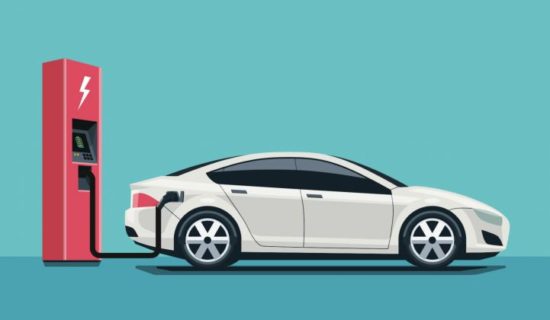Five Reasons You Should Be Driving an Electric Car Right Now
20 2018

Smoke from these horrendous California wildfires still blankets the enormous Sacramento-to-the-Bay region of California and poisons its 10 million residents. If you live in California, or only feel sorry for those who do, perhaps it’s worth considering right now how you are contributing to unhealthy air and how you can help us reduce air pollution.
What if a single action you could take today could improve the air in your home and in your community and also reduce climate change? What if that same action could possibly even help prevent more raging wildfires in the near future?
Your greatest contribution to poor air is quite possibly your choice of individual transportation. Transportation is responsible for a huge 40 percent of this state’s greenhouse gas emissions, and it accounts for a similar amount in other states.
Now, if you exclusively walk, bicycle, take public transit, or otherwise never drive a car, thank you! You are several steps ahead of the rest of us on this path towards living in harmony with our one planet.
For the rest of us, a news flash:
You no longer need to burn fossil fuels for transportation.
In fact if you’re still driving a car that spews fossil fuel emissions into the air to get you around, here are five reasons to stop today and start driving an electric vehicle:
- The technology is here. With the 2016 commencement of mass production of the Chevrolet Bolt, an inexpensive, long-range, all-electric car, the evolution of electric cars reached an astonishing plateau where now everyone can drive electric and pollution-free. The Bolt gets 238 miles on a charge and can be had for a little over $30,000 with rebates or via a monthly lease. Some will argue that the technology arrived earlier — with the Nissan Leaf, the Tesla Model S, the Chevy Volt, or even with GM’s EV-1 back in the 1990s — but each of those vehicles had drawbacks or shortcomings. For practical purposes, the arrival of the Bolt has heralded the beginning of the era of mass adoption of electric vehicles. 238 miles is seven times the number of miles the average person drives in a day. Many Bolt or Leaf owners charge their vehicle every night like they do their phone, so they skip gas stations altogether and worry about running out of fuel even less often than do drivers of fossil fuel cars. Options include simply plugging into your home outlet, installing a faster, inexpensive car charger at home or at work, or tapping into the growing network of public chargers nationwide. The Bolt’s growing list of competitors offer an increasing variety of additional options and features, so there’s something for everyone. The big automakers have remained quiet about EVs in their advertising, hoping to sell you one last gas guzzler, but the technology has arrived.
- Save the planet, save money. Although buying or leasing a new or used car isn’t cheap, if you go electric you’ll begin saving money immediately because electric vehicles don’t need gasoline or diesel and require almost no maintenance. They’re far simpler machines than internal combustion engines, with relatively few moving parts, so things like costly breakdowns, tune-ups, and oil-changes will become a thing of the past. Additionally, there are federal tax credits amounting to $7,500, and many states have additional rebates for purchasing and leasing cars as well as for installing chargers. Here in smoky California, rebates ranging from $1,500–4,000, depending on income, are available. My wife and I decided in 2015 not to put a new timing belt and brakes on a 1996 Acura Integra; we saved considerable money switching to a Chevrolet Spark EV, the precursor to the Bolt. Back then, my wife was at first nervous about the big switch to driving electric, but within a month she told me gas stations were dirty and she hoped never to go back.
- Healthy for you and your family. Driving electric is obviously good for the planet as a whole, but it’s also much healthier for you, your family, and your community. Starting up a fossil fuel car and spewing fumes as you simply go about your daily business makes people around you unhealthy and unhappy and it’s inconsiderate if you have another option. When I’m biking or walking with my 18-month-old son and someone drives by in a pollution vehicle, I unconsciously pedal or push the stroller a little faster to minimize our inhalation of fumes. On the other hand If I’m biking, I take a nice deep breath of gratitude every time I’m passed by an electric car. At home, I’m happy just starting up my car in my driveway as it no longer floods the air around my son (who loves to play in our small yard) with pollution, and I know it’s a gift to our neighbors’ children as well. Driving a fossil fuel car puts the dirtiest air right where you and your children breathe.
- Clean driving is fun, fast, and sexy. If you haven’t yet driven a car like the Bolt (let alone a Tesla), you don’t know what you’re missing. The electric drive is smoother and quicker than that of fossil fuel vehicles. As car enthusiasts know, the “zippiness” you feel in a car is all about torque and cornering. Fossil fuel cars have to build acceleration from standstill, but electric cars have 100% of torque available from the moment you touch the accelerator. EVs are also designed with their batteries low to reduce their center of gravity, and this makes the cars corner remarkably well. Once you drive electric, you never go back.
- The reasons not to switch are lies. Every reason you’ve heard not to go electric is likely PR or propaganda from the corporations (oil and automotive) who want to squeeze a few more billion dollars out of us before we all make the transition to EVs. Let’s look at a few of these myths:
- Myth: “These cars still have to get their power from somewhere, and if that power plant is dirty, then so is your car.” This common misconception is a red herring for several reasons. First of all, clean energy power plants are increasing in number and power every day, and in a place like California the chances are already quite good that your power is coming from solar, hydro, or wind. Second, even if it’s nuclear or natural gas, those power plants are also getting greener and can more efficiently make big gains in reducing carbon by adding a single modern filtration technology rather than trying to add millions of little filters to millions of individual cars. Third, even if the power plant is dirty today, you’re still removing the pollution from your own immediate lungs (and your family’s and community’s), and, by making the first step and switching to EVs, you are making it easier to make the big switch to our completely green energy future, because once we’re all driving EVs the political pressure can be directed at a single place — to switch out the last remaining power plants and replace the polluting dinosaurs with generators of clean renewable energy.
- Myth: “Making a new car causes a lot of pollution; it’s better if I just drive my old car until it breaks down.” Several studies have debunked this idea. The gain in switching to electric power of course depends on what car you’re currently driving, but generally speaking, it will be better for the planet within 6–24 months to switch to electric, even considering the materials and transportation of your new or used electric vehicle. If you’re driving an SUV or something similar that gets less than 25 mpg, given average driving habits, the electric car will be better for the planet six months after you switch. If you’re currently driving a more efficient car like a Prius, it still will be better for the planet within 18–24 months of driving without pollution. Think of your current fossil fuel car like a gun: every time you drive it you’re pulling the trigger and firing a few shots at the planet. You don’t have to destroy that old car, but you can put it in the cabinet where it won’t cause any more harm.
- Several more myths discussed here.
And here you have it. Do yourself and the planet a favor and go test drive a Chevrolet Bolt or a Nissan Leaf or a Tesla Model 3 or a Smart Fortwo. You won’t regret it. I’ll thank you as you drive by me and my little son, and all of California just might begin to breathe a little easier.
A few notes:




Connect & Share